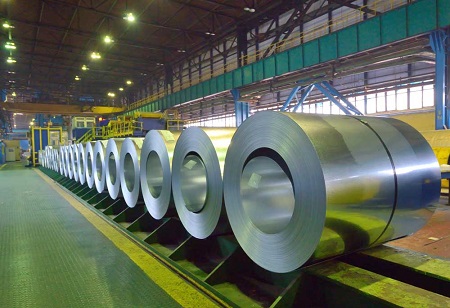The global demand for
steel, is expected to grow in the coming decades since steel is crucial to modern economies & to meet the increasing social as well as economic welfare requirements. While still staying competitive, meeting this demand presents challenges for the iron &
steel industry as it looks for plotting a more sustainable pathway.
“The concept of 'nation building' is reinforced through infrastructural development. Knowing this fact, the Government of India has been taking giant strides for actualizing the path towards impeccable infrastructural evolution. For example - with growth orientation, infrastructure continues to be the focus of the budget 2022,” says Rishi Agarwal, Managing Director & CEO, Global Steel Company.
“Owing to the multifaceted development program ranging from railway and metro projects to state and national highways and more, the paramount role of steel to instigate the change remains unquestioned and so is the contribution of
Steel Fabrication segment,” he adds.
The industry at present is responsible for about eight percent of global final energy demand and 7 per cent of energy sector’s
carbon-di-oxide emissions which also includes process emissions. But, low-carbon technology deployment as well as resource efficiency, iron & steel manufacturers hold a huge opportunity for reducing energy consumption as well as greenhouse gas emissions, through innovation and to develop highly sustainable products & improve their competitiveness.
The Carbon-di-oxide emissions amount from steel manufacturing is almost twice the amount of steel that is manufactured – which is 1.85 tons of carbon/1 ton of steel. And in other words, if steel were a country, it would be the 5th largest producer of carbon emissions, globally.
Carbon Clean technology
While the complexity of the steel manufacturing task renders a wide range of challenges, one of the significant challenges is to choose the most effective site for installing capture technology as there are several emissions sources on-site and there are numerous solutions that are possible to bring steel to net zero.
Today, one of the most highly recycled materials in use is steel, while iron ore is the source of seventy per cent of the metallic raw material inputs for steelmaking, the rest of the metal is supplied in the form of recycled steel crap.
Steel manufacturing from scrap needs somewhere around 1/8th of the energy of which is produced from iron ore. This benefit leads to high recycling rates around eighty to ninety per cent, globally. However, scrap cannot complete the industry’s raw material input needs alone since steel production is higher than when the products that are presently being recycled were produced & this only means that recycling alone cannot be relied upon for reducing emissions from the industry to the extent required to meet climate goals.
Access to low-cost renewable electricity in various nations renders a competitive advantage for the hydrogen-based direct reduced iron route. And, this would decrease just under fifteen per cent of primary steel production by 2050. Gas-based DRI as well as multiple innovative blast furnace concepts, & innovative smelting reduction, all equipped with CCUS, prevail in segments where the local policy context is favorable & cheap fossil fuels are abundant. In the Sustainable Development Scenario, Hydrogen & CCUS coupled together render for around 1/4th of the cumulative emission reductions.
Reaping the cost benefits of carbon capture
One of the best ways for decarbonizing the current steel plants is to implement the CCUS on the blast furnace for capturing & storing or utilizing the carbon-di-oxide. In some of the cases, this carbon-di-oxide can be used with water as well as a plant waste that is known as slag, for producing construction material & valorization of captured carbon in this manner can offer an additional revenue stream for steelmakers.
More efficient use of energy & materials
In order to meet the global energy & climate goals, emissions from the steel industry should fall by at least fifty percent by 2050, furthermore with continuing declines towards the zero-emissions being pursued thereafter. The IEA Sustainable Development Scenario shows an ambitious pathway for net-zero emissions for the energy system. The average direct carbon-di-oxide emission intensity of steel production should decline by sixty percent by 2050, while there is a highly efficient use of materials that enable in lowering the overall levels of demand that is relative to its baseline projections.
The road ahead
New steelmaking processes are highly crucial however there doesn’t exist a single right answer. Hydrogen, carbon capture, use & storage, bio energy as well as direct electrification - all of these constitute avenues to achieve deep emission reductions in steelmaking with several new process designs that are being explored currently. The availability of raw materials, Energy prices, the regional policy segment and technology costs are all some of the factors which would shape the technology portfolio in the Sustainable Development Scenario.
The global iron & steel market is expected to be fueled by surge in investments in the residential construction industry. The smart city development projects around the world is anticipated to remain as one of the important factors in bolstering the above mentioned trend.
